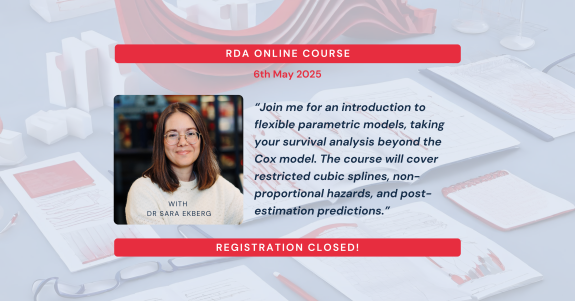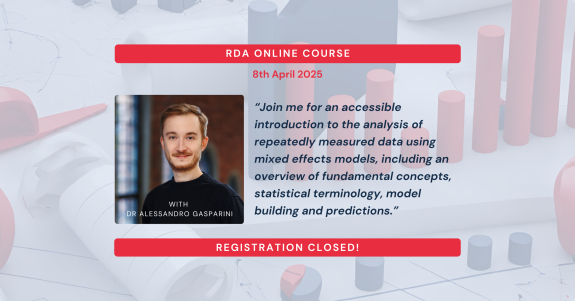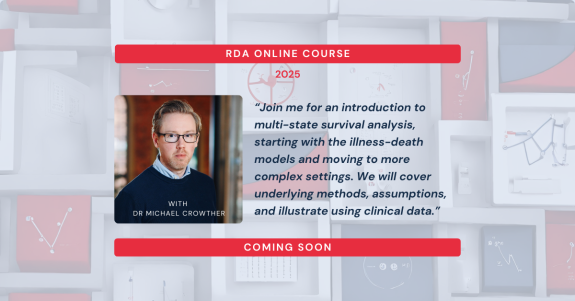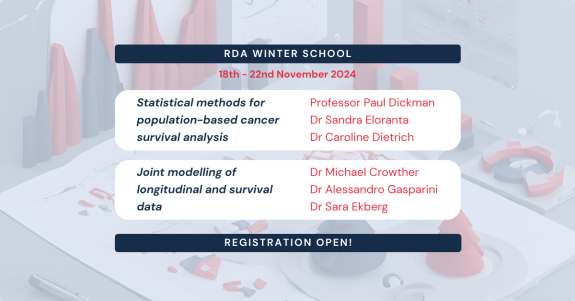
When
Coming soon.
Where
This is an online course consisting of three sessions (lectures and computer labs) spread out over three days.
Course description
Competing risks models play an increasingly important role for predicting absolute risks of disease and prognosis using time to event data.
The goal of this course is to provide a solid introduction to important concepts in the presence of competing risks (e.g., which quantities can be estimated and what they represent) as well as practical aspects of estimation, and runs in three sessions over three days.
Session 1: Re-cap of key requirements in survival analysis and introduction to competing risks. The independence assumption. All-cause mortality versus cause-specific mortality. The cause-specific cumulative incidence function (CIF).
Session 2: The Aalen-Johansen estimator of the cause-specific CIF, modelling cause-specific hazard functions using flexible parametric survival models, and prediction of cause-specific CIFs from models.
Session 3: Extension to non-proportional cause-specific hazards models. Modelling the subhazard function (Fine and Gray models). Weighted estimates of the cause-specific CIF. Summary of key concepts.
Faculty
Caroline Dietrich, PhD
Director of Applied Biostatistics
What to expect
The course instructor has formal training in statistics and extensive experience in applied clinical research. Each session will consist of a mix of statistical concepts and applied examples, with emphasis on interpretation and practical aspects (such as computing). Course material, including lecture slides, tutorial exercises and solutions, and additional references for further reading will be provided.
After completing the course, the participants should have an understanding of in which situations we need to consider competing risks, the meaning of the independence assumption and how it impacts estimation and interpretation of hazard functions and survival proportions, and what the cause-specific cumulative incidence function is and how to estimate it.
Computing
The primary software for the course will be Stata version 17 or higher.
Who should attend
Epidemiologists, statisticians, physicians, public health specialists or anyone with an interest in methods for competing risks. The course focuses on competing risks in medical settings, but we welcome participants with interests in other areas; the methods we teach can be applied to other research areas as well.
Expected prior knowledge
We expect participants to possess basic knowledge of the fundamentals of epidemiology and biostatistics and be comfortable fitting and interpreting statistical models in epidemiology (e.g., linear regression, logistic regression, Poisson regression, or Cox regression). Prior basic knowledge of Stata will be assumed.
Register your place
Registration will open soon. Make sure to get all the latest information by signing up for our newsletter.












